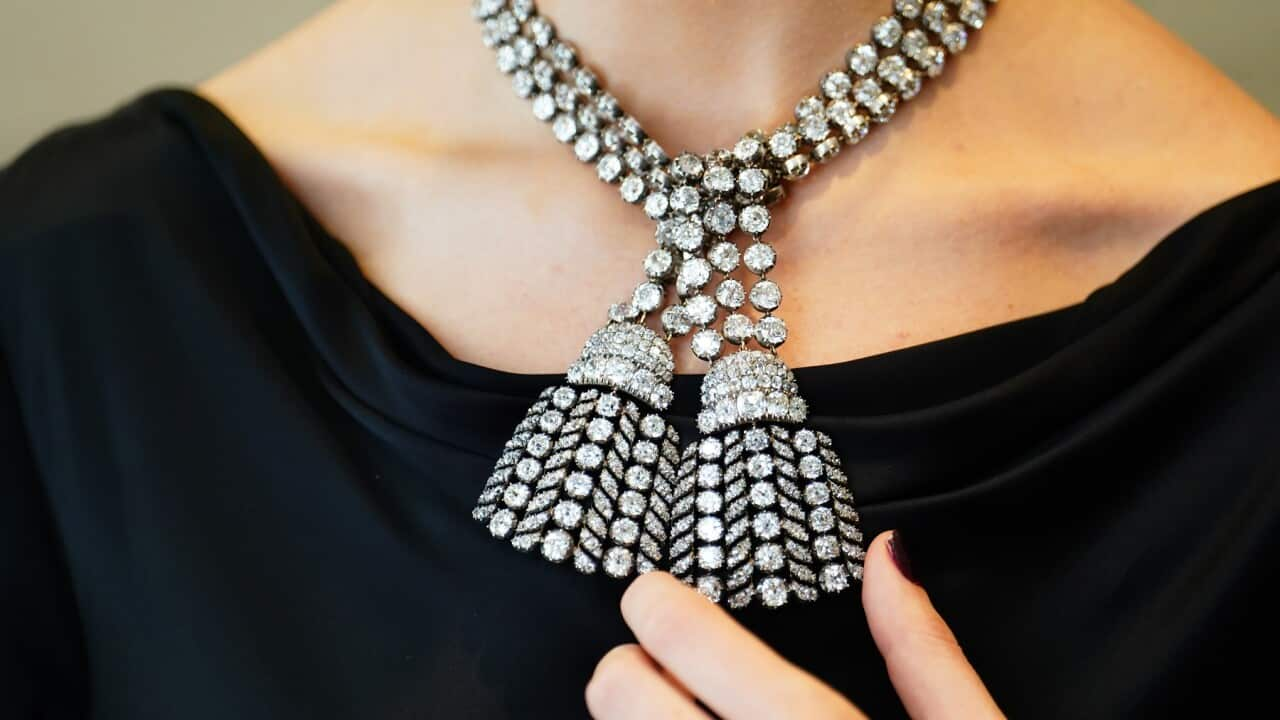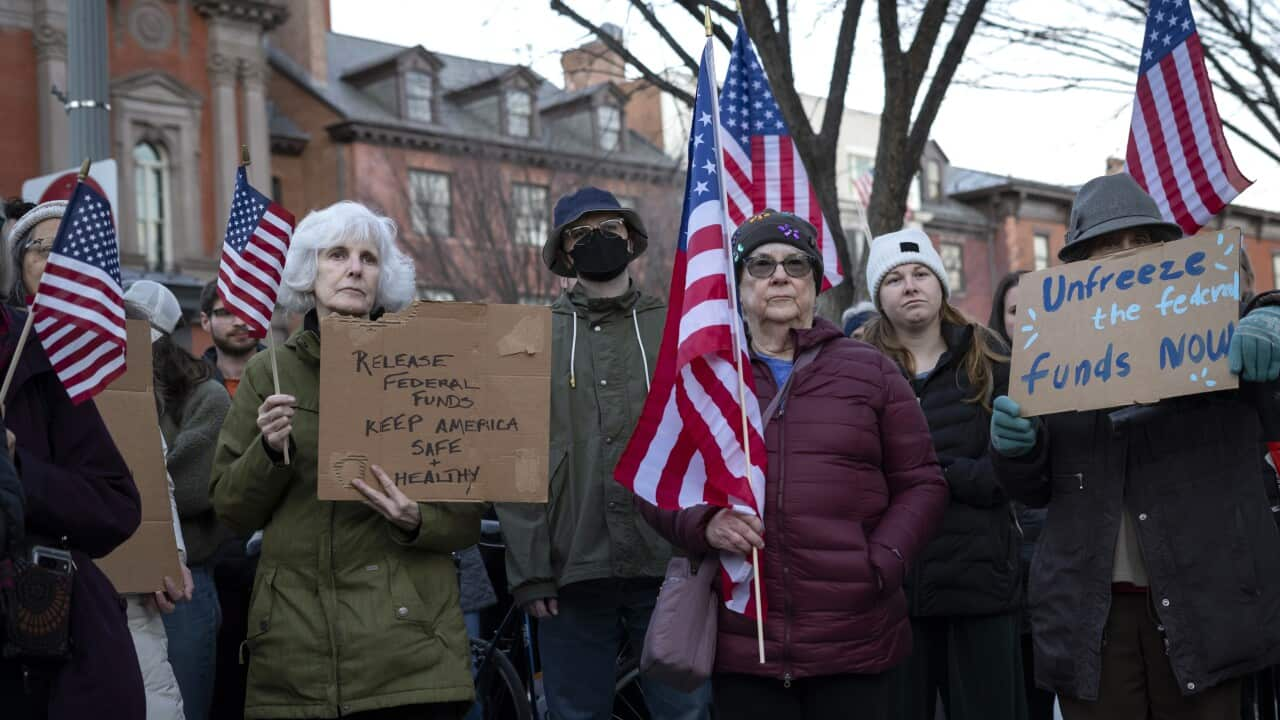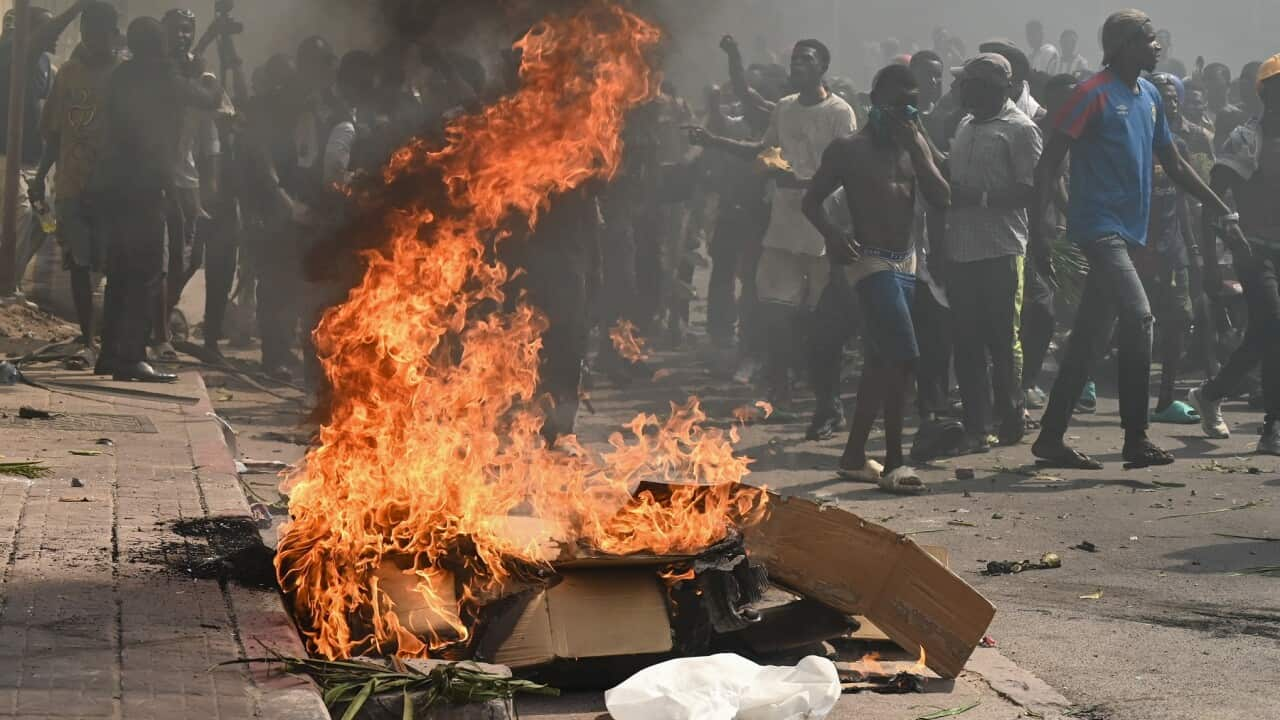TRANSCRIPT
Weighing 300 carats - the rare diamond necklace was made in the decade before the 1789 French Revolution.
Made up of three rows of diamonds with diamond tassels at each end, the piece has gone on public display for the first time in 50 years at Sotheby's London showrooms.
Andres White Correal is the Chairman and Head of the Royal and Noble Sales at Sotheby’s for Europe and the Middle East.
"It is so rare because diamonds were always repurposed and because the mines and of Golconda in India went extinct at the end of the of the 18th century, most of the 18th century jewels, in order to keep with fashion, were broken up. So to have an 18th century jewel intact, of this magnitude, of size and the importance of the diamonds, is exceptionally rare."
It is thought some of its diamonds may have come from the infamous Affair of the Diamond Necklace piece that tarnished the reputation of Marie Antoinette, the unpopular last queen consort of France before the French Revolution.
The necklace did belong to the Marquesses of Anglesey, an Anglo-Welsh aristocratic family, with members wearing it to the coronations of King George VI in 1937 and Queen Elizabeth in 1953.
Mr Correal says the necklace also acts as a historical artefact - telling a story about a particular place and time.
"The most fascinating thing about a jewel is to try to hear what it's telling us. And when you see such a jewel, you get many indications from the start. This would have been worn only by royalty or the highest of aristocracy, because this is a fortune in diamonds in itself. Then, as it goes normally, you know who has owned it last but not first. So I was immediately compelled to try to get all the history about the necklace and it gives you, gives us, fantastic hints because after doing a lot of research, it's surfaced in different times during history, giving us diverse points of view for who it was made and by whom and in which country and in what exact year.”]
Mr Correal says the diamonds used were always repurposed.
This meant that most 18th century jewels, in order to keep up with fashion, were broken up.
As for the seller of the necklace - Mr Correal says it hasn't been seen in public for decades.
"It's been for 50 years in a very important Asian collection and it has not seen the light since. When I got to touch it, your question as to how much it is, it was very difficult to come to the price because it's such a rare object that you cannot compare it to something else.”
The necklace will be offered for sale at Sotheby's "Royal & Noble Jewels" sale in Geneva on Nov. 11.













